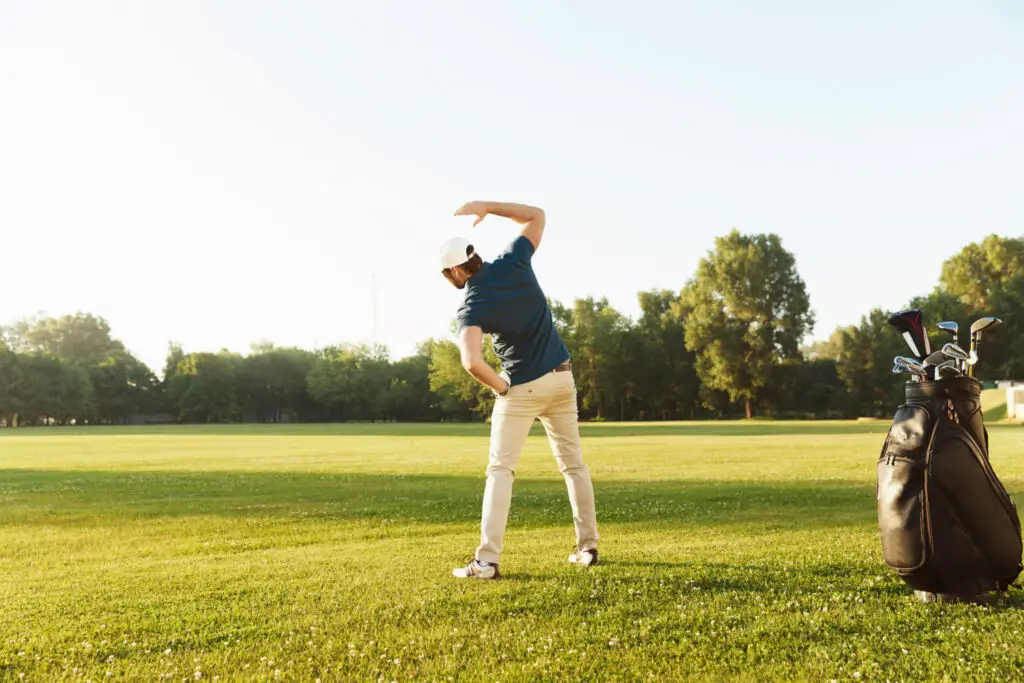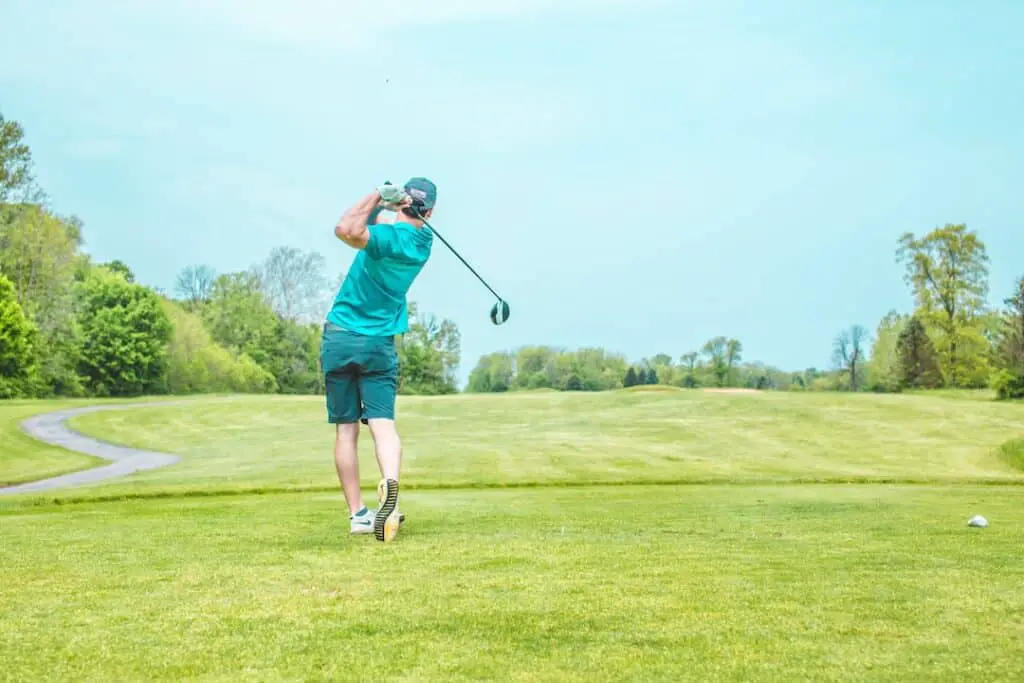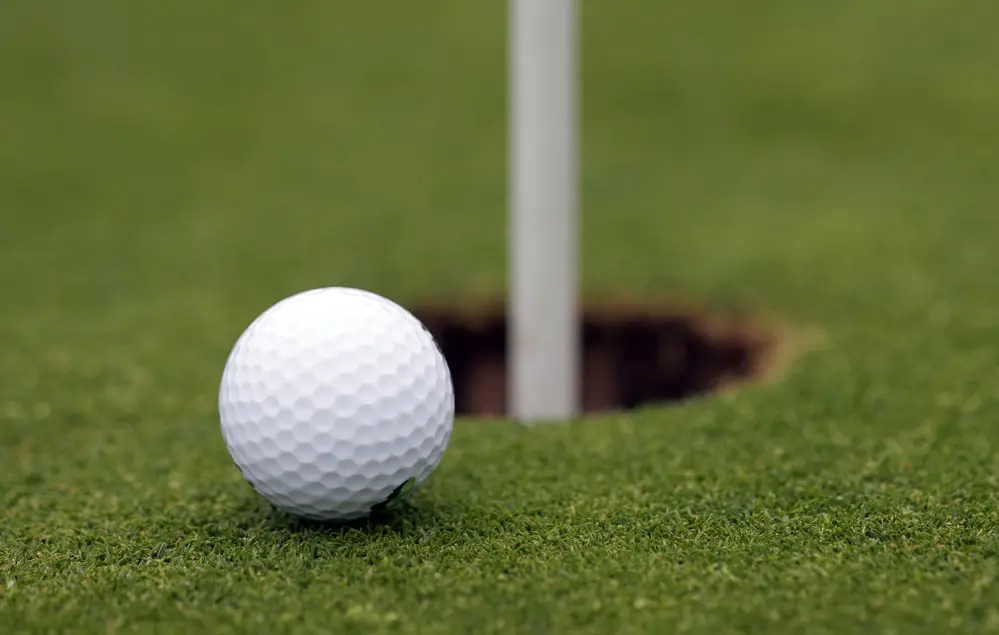Last Updated on November 22, 2023
Golf can be an incredibly rewarding sport, both for the mind and body. It is important to understand which muscles you should expect to feel sore after a round of golf in order to ensure that your body remains healthy and injury free. In this article, we will look at what muscles should be sore after playing a round of golf, as well as how best to alleviate any discomfort.
Core Muscles
The core muscles are essential for improving posture, increasing flexibility and avoiding fatigue while playing golf. Core strength is the foundation of a golfer’s power—it helps to transfer energy from your legs through your torso and arms into the club, allowing you to generate full swing speed. In turn, this creates more distance off the tee and accuracy on approach shots. To achieve maximum benefit during the game, it would be wise to perform targeted exercises prior to each round, such as planks, lunges, squats, and side bends.
Exercises focusing on strengthening your shoulder girdles, like lateral raises, chest presses, bicep curls, triceps dips, and pull ups should all be considered regular components within any pre-game warm up routine. Doing so will not only improve performance but reduce soreness afterwards by ensuring those muscles have had enough time to prepare themselves for activity before being called upon during play.

Shoulder And Arm Muscles
Transitioning from core muscles to shoulder and arm muscles, it is essential for golfers to understand the balance between strength and flexibility. According to a recent survey by Golf Digest magazine, 56% of professional golfers believe that grip strength is the most important factor in their swing mechanics.
To improve your game with these muscle groups, consider implementing the following strategies:
- Incorporate exercises into your routine to strengthen your arms and shoulders;
- Take time to stretch before each round of golf;
- Focus on improving your grip strength through various drills;
- Consider incorporating flexibility training such as yoga or Pilates into your weekly regimen.
These tips may help you gain an advantage over other players while also avoiding common injuries associated with playing golf! With this newfound knowledge, you are now equipped with all the necessary tools needed to optimise your performance and prevent any future issues – let’s move on to back muscles next!
Back Muscles
The back muscles are an essential part of golfing, as they help with the swivel technique and posture training that is required for a successful shot. It follows logically, then, that if you have been playing golf regularly, your back muscles should be feeling sore afterwards.
| Activity | Explanation | Benefits |
|---|---|---|
| Physical conditioning | Strengthening exercises prior to playing golf, such as stretching out the lower and upper back muscles through exercise or yoga routines which can increase flexibility and range of motion in these areas. | Increased stamina during rounds of golf; improved ability to maintain good form throughout swings; reduced risk of injury due to increased strength in key muscle groups. |
| Posture Training | Practice proper stance and body alignment while swinging – this includes maintaining correct hip position and shoulder alignment when setting up shots. This helps ensure that all parts of the body move together during the swing. | Improved power transfer from legs to arms; increased accuracy on shots; increased consistency across multiple shots. |
It is important to give your back muscles time to rest after playing so they can recover quickly. Taking breaks between holes allows for regular stretches and breathing exercises which will help reduce tension in those areas, allowing them to relax more effectively before returning to play another round. Thus having properly trained back muscles not only improves performance but also reduces fatigue and decreases recovery times afterwards – both necessary factors for any serious golfer looking for success!
Leg Muscles
Leg muscles tend to be the most common source of discomfort among golfers as they provide stability when swinging the club through impact. The primary leg muscles used during the swing motion include glutes, hamstrings, quadriceps, adductors, and calves. Strengthening these muscles will help improve your body balance throughout the entire swing, which subsequently leads to better ball striking and reduced risk of muscular pain or injury.
Regular stretching before and after each round helps keep these leg muscles flexible for optimal performance on the course. Additionally, incorporating exercises such as squats, lunges, step-ups, and calf raises into your daily routine can also strengthen these same muscles while enhancing body awareness – an important factor during swings with clubs like Drivers or Irons.
Neck Muscles
The muscles that make up the neck are often overlooked when assessing soreness after a game of golf. However, due to the posture and mechanics adopted during a golf swing, these may be one of the areas where the most tension is found. The primary muscle groups in this region include the trapezius, sternocleidomastoid, splenius capitus, levator scapulae and upper rhomboids.
Golfing requires good flexibility and mobility throughout the entire body. However, it is important to understand that having too much range of motion can hinder performance on the course. As such, it is essential for golfers to have adequate strength in their neck muscles in order to maintain proper posture while performing their swings. A tight or weak neck can lead to poor technique, which could result in an inefficient shot being taken. Furthermore, if not managed correctly, this could also cause pain or discomfort afterwards.
Conclusion
Playing golf is an enjoyable sport that can help with both physical and mental well-being. To ensure you are getting the most out of your game, it’s important to warm up correctly before teeing off. This includes stretching, exercises tailored for golf performance, wearing appropriate clothing as well as dietary changes. After a round of golf, certain muscles, such as those in the back and shoulders, will be sore from swinging the club.
However, this is completely normal! With regular practice and a few simple steps, any golfer can improve their skills while avoiding unnecessary discomfort or fatigue.



